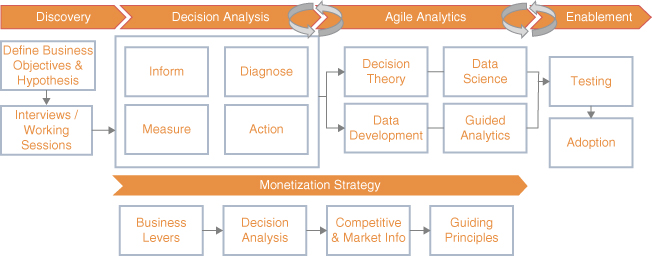CHAPTER 14Agile Approach: Getting Agile
A consistent theme of our discussion is that the processes we advocate do not follow a linear, one-way flow of execution. Rather a more agile, iterative cyclical approach is required to be effective. As Figure 14.1 indicates, iterative processes with feedback loops and agile development cycles are embedded across the flow of the primary phases of the project. In this chapter we introduce the agile nature of the processes we use to develop analytics in our Decision Architecture methodology.

Figure 14.1 Decision Architecture Methodology
Agile Development
First a word about Agile Development. In 2001, a group of software developers formed the Agile Alliance and published a “Manifesto for Agile Software Development.” The Agile Alliance enumerated core principles that emphasize a people-centric, pragmatic, collaborative, and iterative approach to software development projects.
While the Agile Manifesto was written in the context of software development, there are many parallels to development of analytical solutions as both subject areas consist of complex, interconnected, dependent processes to deliver a working product. Business analytics and business software are driven by the same purpose, which is supporting the needs of the business to deliver better products and services to satisfy customer needs.
Business priorities and objectives ...
Get Monetizing Your Data now with the O’Reilly learning platform.
O’Reilly members experience books, live events, courses curated by job role, and more from O’Reilly and nearly 200 top publishers.

